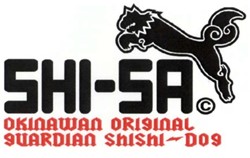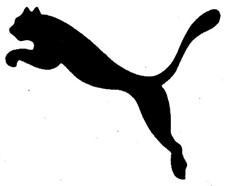<The Registered Trademark>

<The Cited Trademark>

Summary of the Judgment
1.Whether the trademark is registered for “unfair purposes” (Article 47(1) of the Trademark Act in parentheses)
In light of the fact that the Registered Trademark and the Cited Trademark are different from visual, phonetic and conceptual perspectives, and are not similar because there is no risk of causing confusion as to the origin of the goods when used on the designated goods, it cannot be proved that the defendant has applied for and obtained registration of the Registered Trademark with “unfair purposes” to merely take advantage of the customer appeal power of the Cited Trademark, dilute its function to indicate the origin, or damage its fame.
2.Whether the Registered Trademark falls under Article 4(1)(vii) of the Trademark Act
The Registered Trademark and the Cited Trademark are different from visual, phonetic and conceptual perspectives, and even if the Registered Trademark is used for its designated goods, there is no risk of confusion as to the origin of the goods. Therefore, the plaintiff’s argument that the trademark falls under Article 4(1)(vii) of the Trademark Act because it is contrary to the purpose of the Trademark Act, which is to maintain the business credibility of those who use the trademark and to protect the interests of consumers, and thus disturbs the fair trade order and is against commercial morality, cannot be adopted in its premises.
Comments
1. Judgment Summary 1 states that whether “a trademark is registered for unfair purposes” (Article 47(1) of the Trademark Act in brackets) should be judged, mainly on the grounds that there is no risk of causing confusion as to the origin of the goods and that the trademarks are not similar. The court found that there were no “unfair purposes” such as merely taking advantage of the customer appeal power embodied in a well-known and famous trademark, diluting its source indication function, or damaging its reputation.
2.Regarding the applicability of the Registered Trademark to Article 4(1)(vii) of the Trademark Act, Judgment Summary 2 found that the trademark does not fall under Article 4(1)(vii) of the Trademark Act because there is no risk of harm to public order or morality based on the fact that the trademarks are not similar and that there were no “unfair purposes” from Judgment Summary 1.
3.In conclusion, it is understood that Judgment Summary 1 and 2 denied the claim of “unfair purposes” (Article 47(1) of the Trademark Act in brackets) and violation of public order or morality (Article 4(1)(vii) of the Trademark Act) mainly based on the fact that the Registered Trademark is not similar to the Cited Trademark and there is no risk of causing confusion as to the source of the goods.
4. For your reference, in the judgements of 2009 (Gyo-ke) No. 10404 and 2017 (Gyo-ke) No. 10203, the defendant’s trademark “ “, which is similar to the Registered Trademark, did not fall under Article 4(1)(vii), (xi), (xv) and (xix) of the Trademark Act, in relation to the plaintiff’s trademark “
“, which is similar to the Registered Trademark, did not fall under Article 4(1)(vii), (xi), (xv) and (xix) of the Trademark Act, in relation to the plaintiff’s trademark “ “. Furthermore, in the judgement of 2017 (Gyo-ke) No. 10205, the Registered Trademark did not fall under Article 4(1)(vii), (xi) and (xv) of the Trademark Act, in relation to the plaintiff’s trademark “
“. Furthermore, in the judgement of 2017 (Gyo-ke) No. 10205, the Registered Trademark did not fall under Article 4(1)(vii), (xi) and (xv) of the Trademark Act, in relation to the plaintiff’s trademark “ “. Accordingly, the judgement of this case should be based on the prior judgements. On the other hand, in the judgement of 2017 (Gyo-ke) No. 10206, the court judged that the plaintiff’s trademark “
“. Accordingly, the judgement of this case should be based on the prior judgements. On the other hand, in the judgement of 2017 (Gyo-ke) No. 10206, the court judged that the plaintiff’s trademark “ “, not containing character elements, should fall under Article 4(1)( xv) of the Trademark Act, in relation to the Cited Trademark.
“, not containing character elements, should fall under Article 4(1)( xv) of the Trademark Act, in relation to the Cited Trademark.
【Keywords】Article 4(1)(vii) of the Trademark Act,Article 4(1)(xv) of the Trademark Act,Article 47(1) of the Trademark Act in brackets,similarity of marks,violation of public order or morality,risk of confusion,unfair purposes,period of exclusion,Shisa,puma
※The contents of this article are intended to convey general information only and not to provide any legal advice.
Takeo SUMIYA (Writer)
Patent Attorney(Japan Patent Attorneys Association)
Kei IIDA (Supervisor)
Attorney at Law & Patent Attorney (Daini Tokyo Bar Association)
Contact information for inquiries: k_iida☆nakapat.gr.jp (Please replace ☆ by @.)